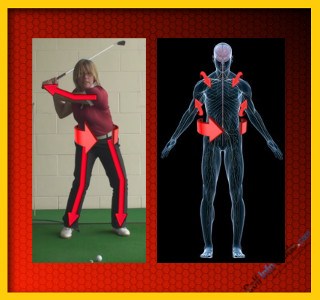
As a golfer, you may feel that you were able to produce results on the driving range and practice ground that you do not seem to be able to recreate on the golf course, under a pressurised situation. It may be that you have a good, technically sound and fundamentally good swing, but that under pressure any small frailties in your golf swing are exposed.
Generally speaking, a golf swing that relies more on timing and moving of small parts of the body can be seen to be less stable and consistent under pressure.
To improve your consistency, try to focus on using the big muscles and big parts of your body more during a practice session. If you are excessively using the smaller parts of your body, these areas tend to be more susceptible to changes in your physiological state and the situations you find yourself in on the golf course. For example, over-excessive use of the hands and arms in the takeaway will result in over-excessive use of the hands and arms in the downswing and impact area and this can cause problems with timing and control throughout your round.
Therefore, try to work on making a bigger movement with bigger parts of your body – so a large shoulder turn for your backswing and then a large hip shift and body turn for your downswing. Try to feel a one-piece takeaway and then a connected downswing where all parts of your body turn together to a balanced, stable, consistent follow through.






